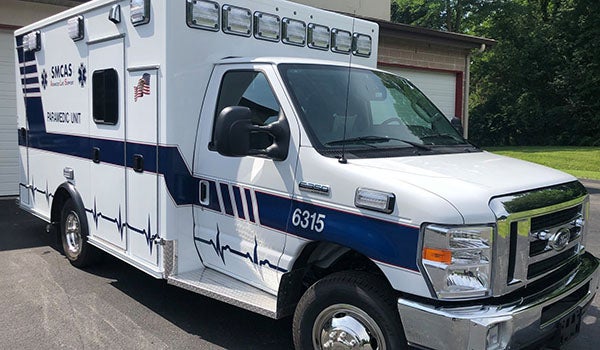SMCAS taking increased precautions amid increasing COVID-19 rates
Published 2:20 pm Wednesday, November 18, 2020
|
Getting your Trinity Audio player ready...
|
SOUTHWEST MICHIGAN — Personal protection equipment is just one of the many layers of precaution the emergency responders at the Southwestern Michigan Community Ambulance Service practice on a daily basis.
According to Executive Director Brian Scribner, each ambulance has two partners providing care in an ambulance, and when a known COVID-19 positivity comes up, the entire situation calls for even more vigilance.
“In our line of work, we cannot risk giving this to each other, because it is too important what we are doing in the community,” Scribner said.
When in contact with someone responders know is positive with COVID-19, protocols include wearing an N95 facial covering, protective eyewear, gloves and disposable scrubs. The patient is given a surgical facial covering.
“You cover your face. You cover your body, your clothing. You cover your eyes, and when one of the crew members has to drive to the hospital, they have to ‘doff’ all of that stuff, and then get a new set when they get to the hospital to take the person in,” Scribner said.
Doffing includes inspecting the personal protective equipment before removing it, to see if any of it has been compromised.
“It’s a minimum of three sets of personal protective equipment per positive COVID-19 patient, but we have been stocking up aggressively since this all started. That anticipation [of another wave],” Scribner said.
He said his operation has been lucky. With the “thousands and thousands and thousands” of dollars invested in stocking up on the PPE, he said it is still a small investment for the staff and patients’ safety.
Between each transport, the ambulance is still cleaned to the same standards as before, with an addition – the UV light.
“We use it twice a shift regardless of whether or not we are aware we have transported a COVID-19 patient, but we try to do it after a COVID-19 positive patient as well,” Scribner said.
The light hands in the ambulance and the door must be closed behind it so that it can shine on each one of the surfaces. According to Scribner, the UV cycle takes about 20 minutes.
“It’s another level of caution we are taking, but everything gets wiped down with disinfectant and cleaned,” he said. “We are having to do the same inside the station. Everybody has to wear masks inside the station, and wherever we are around each other.”
The medical staff have learned since March that symptoms of other, common emergencies and conditions, may also be a COVID-19 symptom. Symptoms of heart attacks, for example, include shortness of breath and chest pain, which might also indicate COVID-19.
“You would have never guessed the patient was COVID-19 positive,” Scribner said. “We have to assume everyone is COVID-19 positive. We have to be as cautious as we possibly can be.”
As he works with his staff, Scribner said he is proud of the work they are doing and the team SMCAS has assembled.
“I feel like we are one of the more fortunate places,” Scribner said. “Our people have been really careful and followed our guidelines.”
Scribner himself is opting out of holiday celebrations this year. At the front line of a pandemic response, he hopes that next year, everyone will still be around his family’s holiday meal table. He said that by skipping out on this year’s festivities, when it is finally safe to do so, he hopes to throw the biggest celebration with his family and that they will all still be there to celebrate with him.
Still, the medics cannot let their guard down as they work to quickly address the multitude of medical emergencies that occur on a daily basis.
“Symptoms are so broad,” Scribner said. “In addition to that, you have people with all of these other problems who are also silent carrier and are symptom free. Nobody knows they are carrying it. We have to be really conscious of that all the time.”







